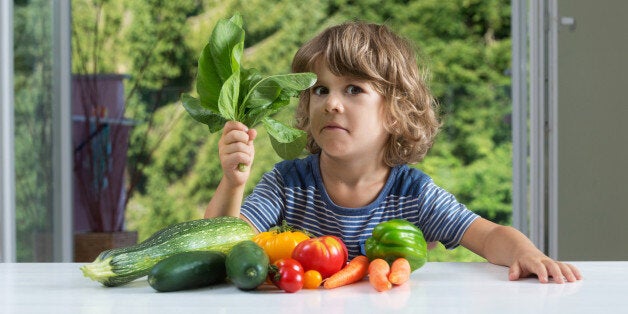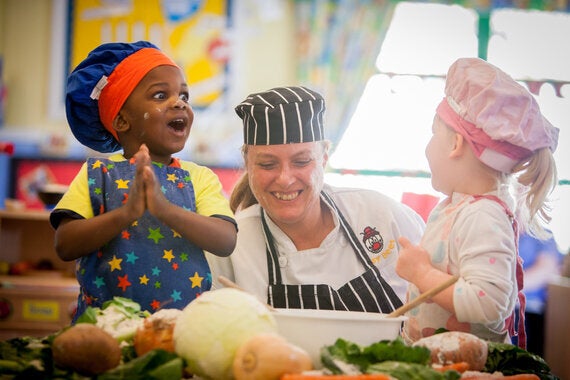
We all know that one of the biggest challenges as a parent is maintaining a work-life balance and meal-time with your children really shouldn't be something that you find daunting.
As a parent of two young girls, aged six and nine, and with four nieces and nephews ranging from aged four to ten, I understand how much of a headache it can be when your little one just doesn't want to try the food you've prepared. That's why I've developed this handy little five-step guide with some useful techniques that have been tried and tested to encourage children aged five and under to try new foods and enjoy eating healthy foods.

Photo taken at a Busy Bees nursery
1.Create food 'best friends'
Getting children to eat foods they don't really like or are unsure about can sometimes be a real struggle, and taking away things that could be conceived as a treat like dessert if they don't finish what is on their plate often just results in negative feelings all round and the outcome is often that the food still goes untouched.
Try telling your child that they don't have to eat all of what they don't like but you would really like them to try some of it. Try explaining that you always make meals so that each food always has at least one 'best friend' on the plate - this means that there is something that it tastes nice with. You can then try and get them to taste a little bit of the less favourable food with everything else to see if they can find its friends. Your child may not end up eating all of it but at least they have eaten some and everyone is still happy at the end of the meal.
2.Use Imagination

Photo sourced from Shutterstock
This one requires a bit more attention to detail and imagination to bring your child's food to life. However, we've all been there and no this doesn't involve the 'choo-choo train' making a return to the dinner table. Try creating a story from what's in the meal, which is easier than it sounds. For example, pretend you and your child are giants, the broccoli on the plates are trees, the potatoes are mountains and the cabbage is slippery green mess laid left by a monster that we need to eat up to save passers-by from falling over in the forest. This might seem a little whacky but using story-time to spark a child's imagination can be a powerful in any form of learning, development or parenting.
3.Make mealtime a family occasion
I can't stress the importance of adding some structure to mealtime - whether it's breakfast, lunch or dinner, serving up food and eating at the dinner table can go a long way to encourage children to try new foods and enjoy what they're eating. As parents, we have a responsibility to educate children about the role mealtime plays in life and maintaining a healthy lifestyle. By sitting down at the dinner table, this shows children that eating is more than just a function but an important part of daily life.
Giving children choice and input at the table is also great for getting them to try different foods. Another option is to serve food on platters in the middle of the table so that the child can then help themselves. Of course, this isn't possibly with all meals but for dishes such as fajitas, why not put all the components into the middle of the table and let the child make their own wrap. This allows the child to really think about the different ingredients going into the dish and understand the healthy foods.
4.Get them cooking

Photo sourced from Shutterstock
It has been proven that when children get involved in the cooking process, they are more willing to try new foods and make healthier food choices. A study by the Schools Food Trust , which measured the impact of cooking activities and clubs on children, found that four to eight-year-olds learning to cook improved their recognition of healthy foods and improved their desire to eat them.
There are lots of ways that you can get your children involved in cooking activities. For example, a great way to engage children in trying new fruits and vegetables is to create 'healthy food hero' characters.
5. Keep coming back to it
It's always a good idea to revisit healthy foods and get your child involved in making something different each time. This shows them there are lots of ways you can be creative with healthy food and make tasty dishes using key, staple fruit and vegetables. The aim is to give children an understanding that healthy foods (i.e. fruits and vegetables) aren't just an add-on to a dish but can be some of the most important ingredients to unlock the taste buds.
By coming back to the same foods prepared and cooked in different ways it also gives the child more chance to not only accept the food but to find a way that they really enjoy it. For example, they may learn that they particularly enjoy Shepherd's Pie with a sweet potato top. By learning this it means that they could then become more open to trying sweet potato in other ways as they have already had a positive experience with it.
You can find more healthy eating tips for children aged five and under here